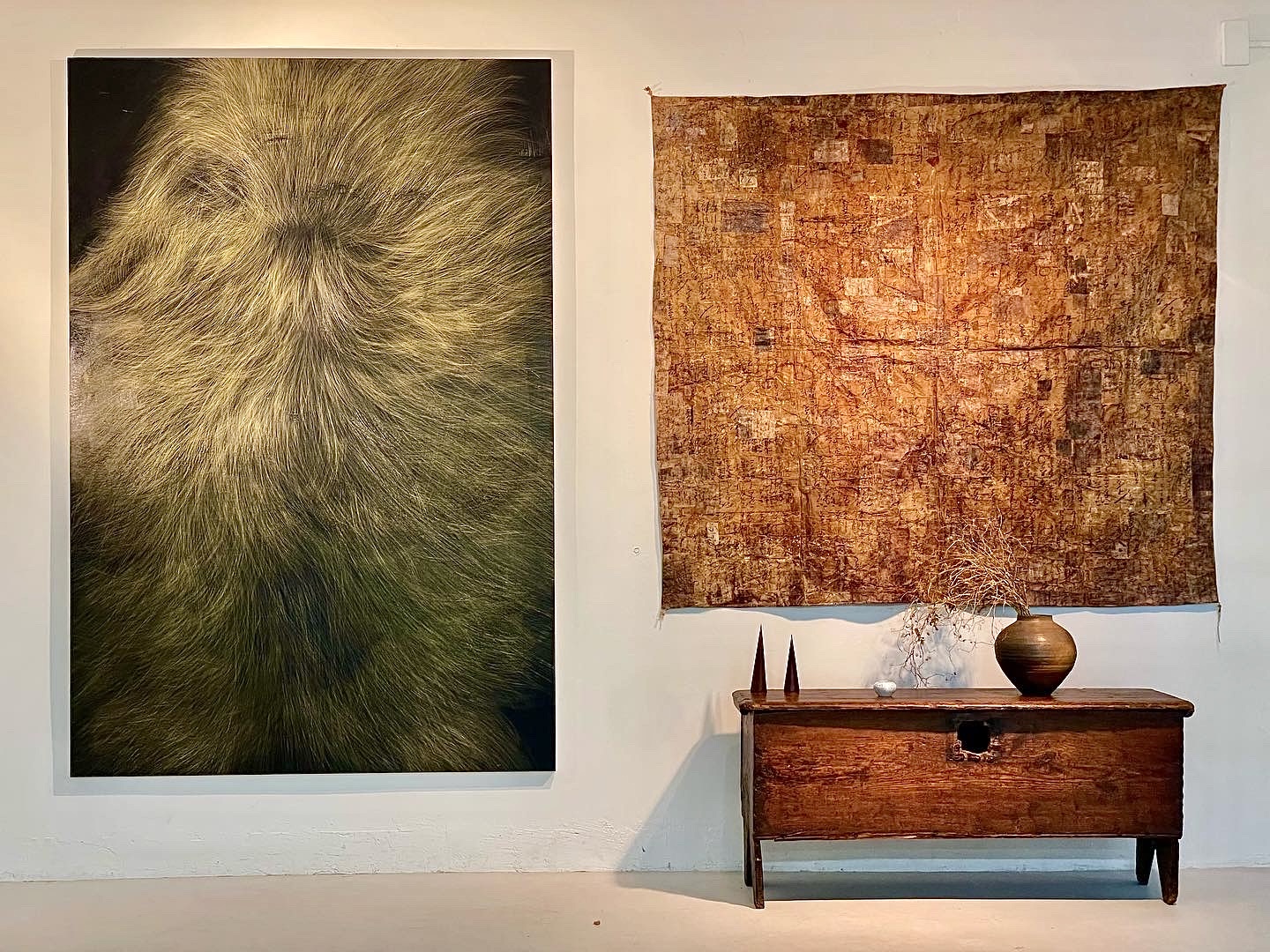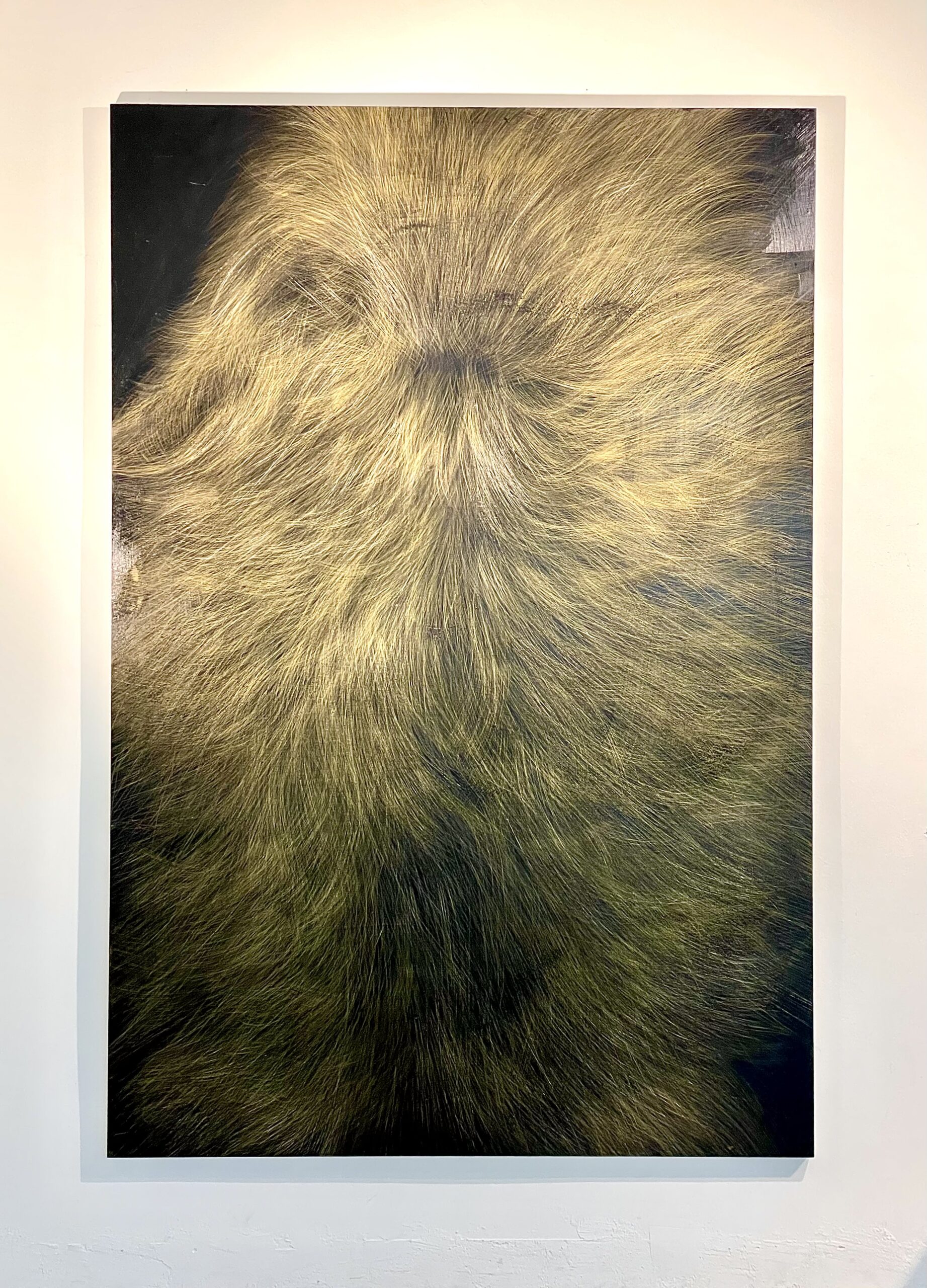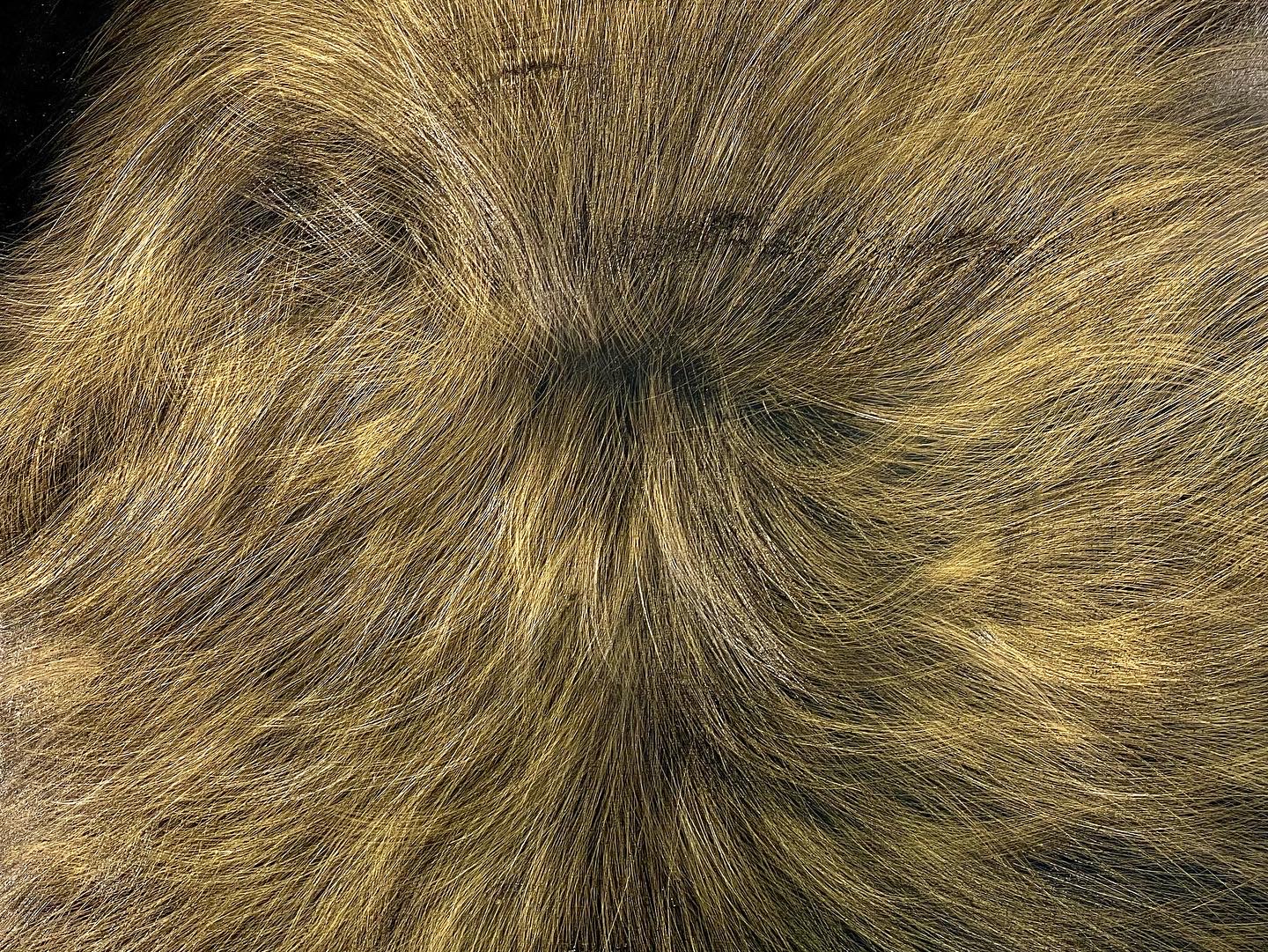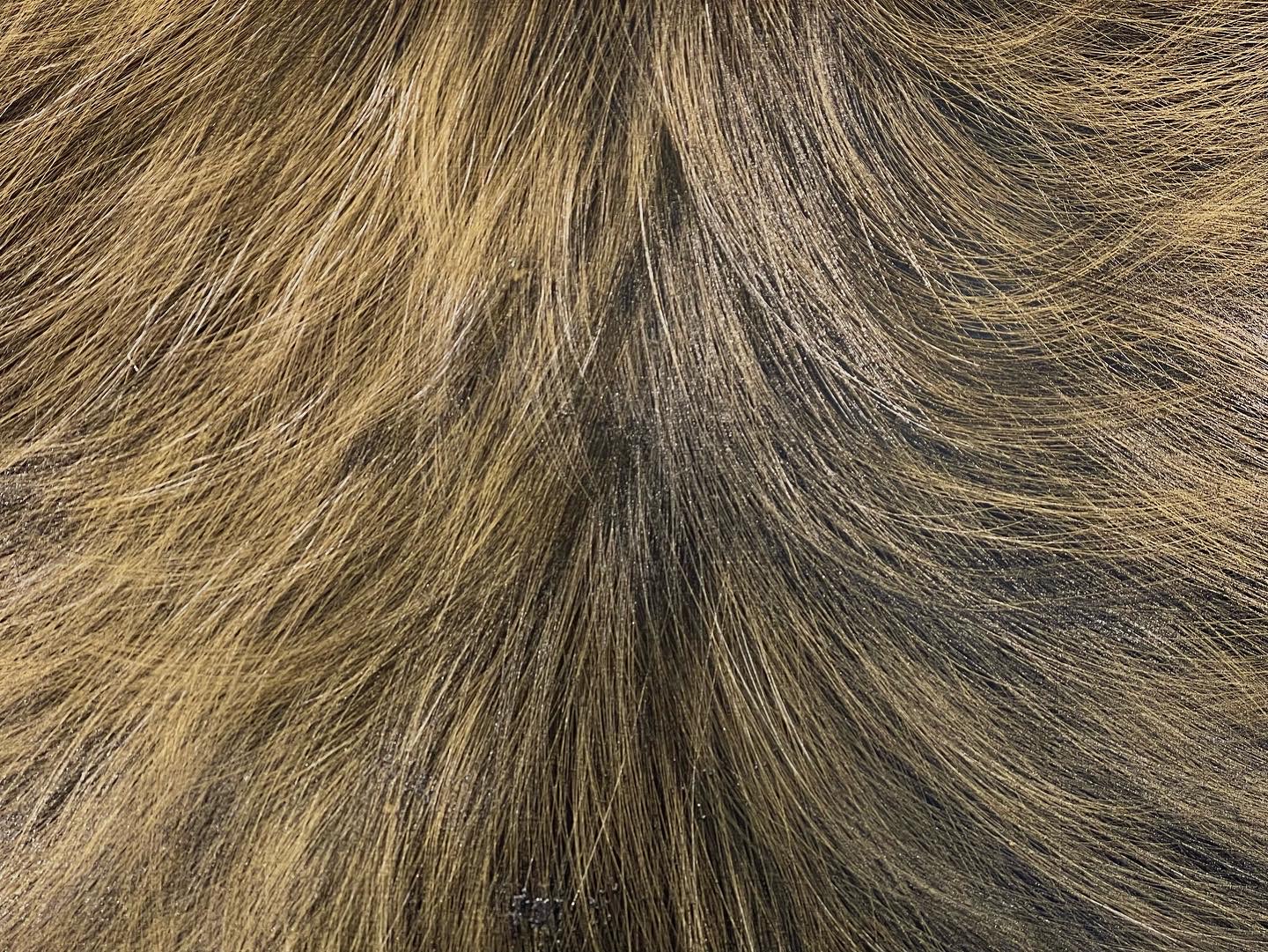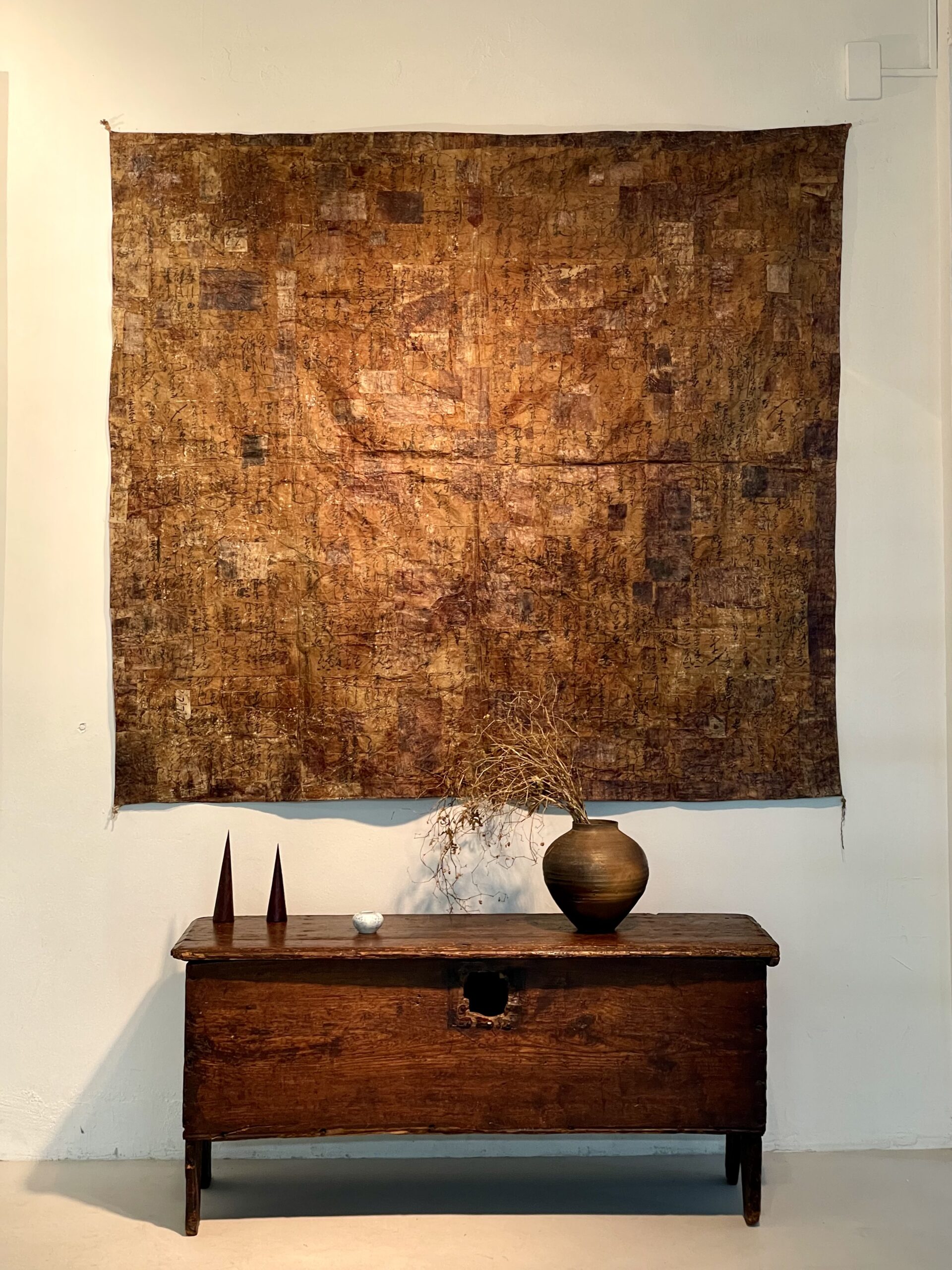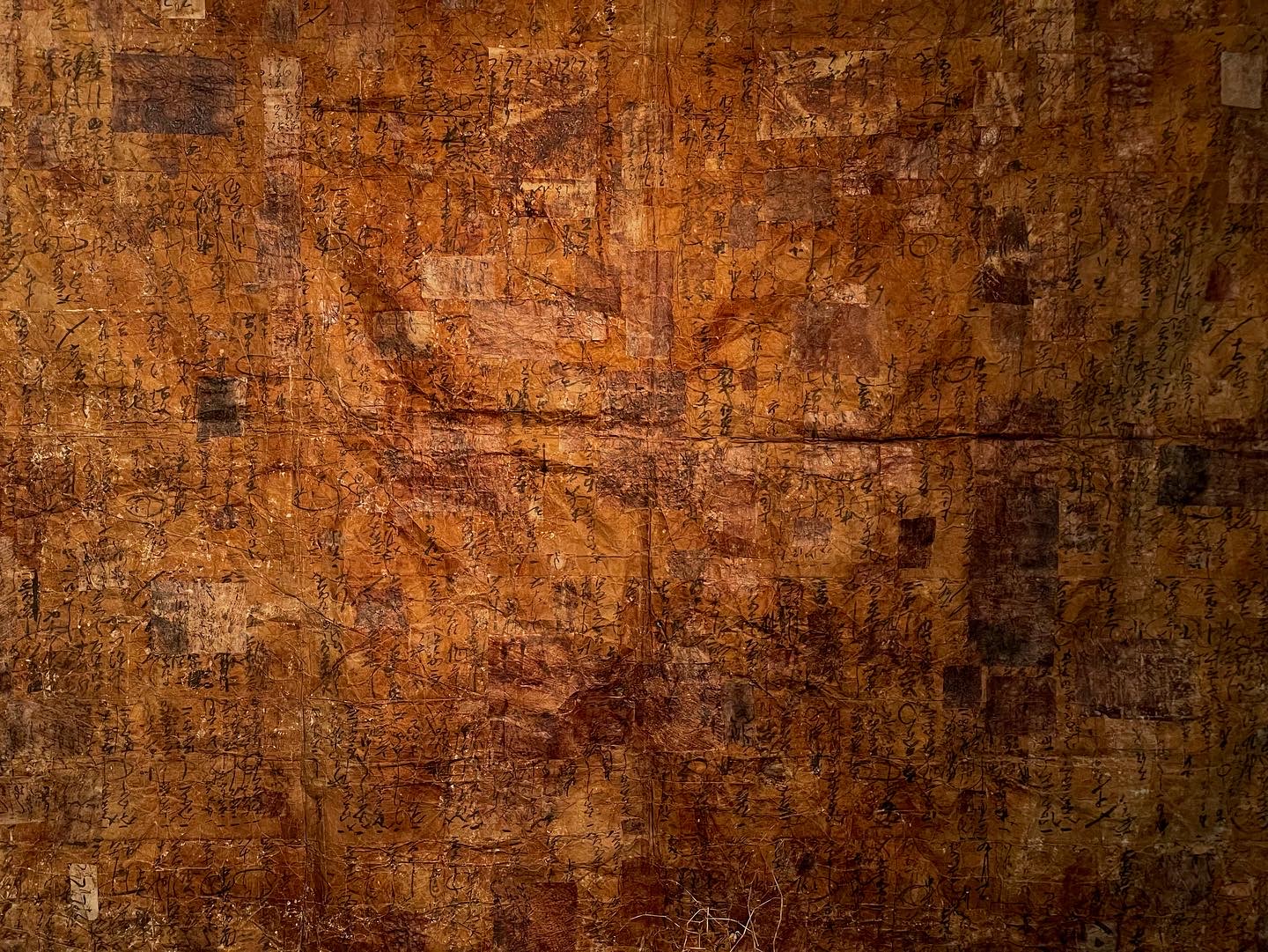The Akikusa Pattern / The Old Account Book・秋草文、大福帳和紙 2022
2022
「The Akikusa Pattern / 秋草文」1,940×1,303 oil on wooden panel, scratched 2022
As seen in Boro* and Funzo-e*, Japanese people have converted and utilized objects that had outlived their usefulness into various objects until they physically disappeared.
This exhibition featured oil-painted scratch works with the motif of the “autumn grass pattern*,” which represents the passage of time, and a large sheet of Japanese paper with various Daifuku-cho (an old-fashioned account book) pasted on it, which was used from the Edo period to the Taisho period (1912-1926).
The values cultivated by the Japanese people and the energy (or life force) of objects over time were reconstructed through the paintings and installations.
*1 Boro: Rags of various sizes made from used cloth.
*2 Funzo-e: Clothes made by washing and purifying unwanted rags, piling them up, and sewing them together.
*3 Akikusa pattern: A traditional Japanese pattern used in numerous arts and crafts works since ancient times to symbolize nature and the flow of time.
※襤褸や、※糞掃衣にみられる様に、日本人は用を終えたモノを、それらが物理的に消失するまで様々なモノに転用し、活用してきた。
本展示では時の経過を表す※「秋草文」をモチーフとして描いたオイルペインティングスクラッチ作品や、江戸時代〜大正時代くらいまで使用された、様々な大福帳が貼り付けられた一枚の大きな和紙を展示した。
日本人が培ってきた価値観や、時を経て生まれたモノのエネルギー(または生命力)をペインティング作品やインスタレーションを通して再構築した。
※秋草文様 古来から自然と時の流れの象徴として数々の美術品、工芸作品に用いられた伝統的な日本の文様。
※襤褸(ぼろ) 使い古した布をツギハギした、大小様々のボロ布
※糞掃衣(ふんぞうえ) 不要になったぼろ裂を洗い清め、重ね合わせて縫い綴った袈裟
